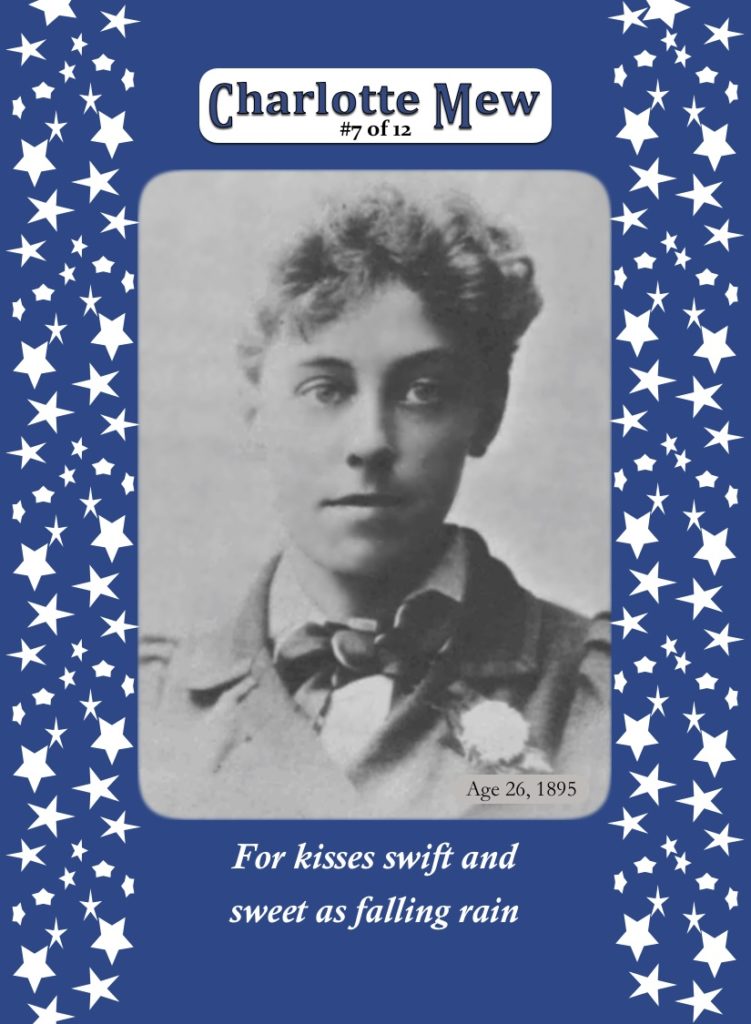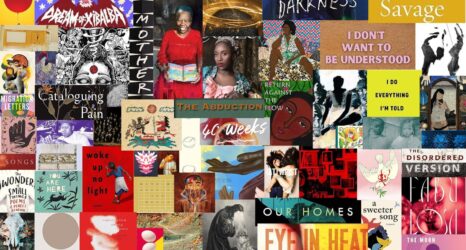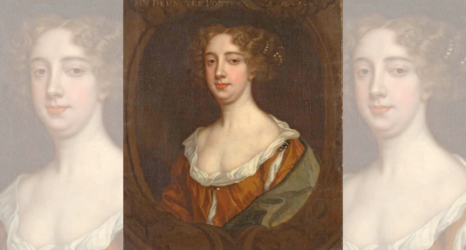Coming out doesn’t make you at home in the world; nor, certainly, does sex. You need bonds beyond sex: a community, a culture, a shared set of obsessions.
—“Love on the March,” Alex Ross, The New Yorker 11/12/12
When I was a young lesbian in rural New Jersey in the ‘70s, I was completely lost in a dark sea and sky—without stars, sun or moon to guide me. The word “lesbian” was only uttered, when it was uttered at all, with contempt and mockery. There appeared to be no place for me in society and culture, and to express myself would be dangerous. I wrote poems, and kept my poems private: a community of one.
Then I saw two words in the Village Voice that pierced through the fog: Lesbian Nation. A whole nation of people like me!
It’s 2020, and I’m still sharply attuned to Lesbian Nation, especially the poet part of the population. Where are the stars, sun and moon of lesbian poets? I look for you always. I love most those lesbian poets who are fearless and inclusive and complete, who don’t censor themselves. Let me share your voices with the world. So I did, starting Lavender Review and Headmistress Press.
This year, Headmistress Press is proud to announce the inaugural Sappho’s Prize in Poetry, awarded annually for one full-length poetry collection by a lesbian. To celebrate and promote this prize, I’m posting a series of short monthly book reviews or interviews here at Ms.
Full disclosure: I’ve published some of these poets in Lavender Review, though I haven’t published any of their books. Headmistress Press made Lesbian Poet Trading Cards for some of these poets. Some of these poets have served or will serve as judges for the Headmistress Press Charlotte Mew Chapbook Contest.
Who is Charlotte Mew?
Charlotte Mew, an English poet born in 1869, died by her own hand in 1928, tormented and inconsolable, having lost her whole family to the cemetery or lunatic asylum.

Mew lived in the repressive era of the Oscar Wilde trial, and her love for women was unrequited, and even publicly mocked.
Apparently, Mew burned most of her poems.
But Virigina Woolf said that Mew is “very good and interesting and unlike anyone else” and the “greatest living poetess.”
According to Eavan Boland, Mew’s words about Emily Brontë apply to Mew as well:
“When first we read these songs, we are brought face to face with the woman who wrote them. And when once we know them and have been haunted by their rebellious and contending music it will not be possible to forget.”
Why Is Our Contest Named After Charlotte Mew?
I close my eyes and try to imagine being with Charlotte Mew on March 24, 1928, the day she killed herself. Let me befriend her. Let me do and say things to ease her pain and save her.
I’m a lesbian poet from the year 2020, Charlotte, who adores your poems, how they transform your torment into art, like in “Smile, Death.” The delicate, powerful longing and passion for women, though you try to disguise it, like in “The Farmer’s Bride” where you have the farmer/husband say:
The soft young down of her, the brown,
The brown of her—her eyes, her hair, her hair!
Mew might have been horrified to hear these unmentionable things.
I imagine Mew wanted what male poets seem to be given automatically: respect, dignity, privacy, freedom, connections and the mantle of authority. Sadly, even today, these things wouldn’t be given to Mew or to lesbian poets in general.
Three great women writers killed themselves: Charlotte Mew, Virginia Woolf, Sylvia Plath. Heather Clark asserts in her forthcoming Red Comet: The Short Life and Blazing Art of Sylvia Plath, “It is no accident that Plath killed herself on the day she was supposed to enter a British psychiatric ward.”
Mew, Woolf and Plath all had previous experience with psychiatric wards. The horror inflicted on women in various institutional cages is unbearable. Since Mew’s relatives were already there, perhaps she, like Plath, felt death was the only option.
If I couldn’t save Mew on that day in 1928, perhaps I could save her poems. If she did burn most of her poems, I understand that impulse. I spent most of my life trying to learn how to save and protect my poems. What I did save feels like a miracle.
What Are the Lessons of Charlotte Mew?
Here to answer this question is Rita Mae Reese, Mistress of Marketing at Headmistress Press:
The first time I taught was in a lit theory class in grad school. I got to present on Barbara Smith, whom I had seen once at a conference and was totally in awe of. My whole presentation pretty much consisted of writing “lesbian” on the board and erasing it, over and over again. That, I said, was the history of lesbian writing, starting with Sappho’s fragments, which had been written over with Christian texts or defaced or destroyed in other ways.
The lecture led into the idea of essentialism—is there something “essential” about one’s sexuality or gender? Or about any part of our identities?
I talked about how offended the poet Elizabeth Bishop had been when she was invited to contribute to an anthology of women poets. I wrote the words—“woman” and “poet” on the board. What happened when you erased “woman?” Was the poet defacto male? defacto straight? defacto white?
Years later, I made it to another university, and got to know the poet Eavan Boland. I wasn’t there as a poet—woman or otherwise—but I was eager to learn from Eavan. I asked to sit in on her undergrad lectures and she seemed mildly taken aback by the request, but she also did everything she could to help poets, particularly women poets (the fact that she wasn’t at all sure I was actually a poet made for some awkward moments). I remember her reading “Howl” with her delightful Irish voice. She was a phenomenal reader, both in the performative act of reading and in knowing the value of each word, each stress and hesitation.
It was Eavan who introduced me to the work of Charlotte Mew. She adored Mew, and kept her story close—I think in part to remind herself why it is so important to champion the work of women poets.
One of the things Eavan taught was that sometimes what can make a poet important is the permission that one poet can give to other poets, like opening the gates to another part of the map, the way Adrienne Rich did with the personal, the domestic and even the political—making space for women to use our own voices without needing to borrow authority from anyone.
So what permission do we—as women, as lesbians, as poets—get from Mew, who died in despair and agony, having drunk Lysol (which was a common form of poison for suicide, being relatively cheap and easy to obtain)?
When I first discovered poetry in college, I thrilled to the words of Sexton and Plath. Their poems made me want to be a poet. And then I learned that they killed themselves. The male poets we were reading hadn’t killed themselves. There seemed to be something potentially lethal about the combination of “woman” and “poet,” and I wasn’t interested in martyring myself on that cross.
Then we read Rich and Bishop, and I calmed a bit—and wondered if being a lesbian and a poet wasn’t some sort of vaccine for the occupational hazards. Maybe I could be a poet and survive.
So, I might not have paid too much attention to Mew if it hadn’t been for Eavan’s enthusiasm for her. Mew’s death could too easily overshadow her work in my mind—being a threat to my theory about lesbian poets being more, well, durable (and yes, I know the sampling size was too small to be of any account, but I was young and desperate to make a map for my life using any landmarks I could). And Mew’s most famous poem, “The Farmer’s Bride,” is formal and strange, and I might not have let those lines haunt me, as they eventually would, without Eavan’s devotion to them.
Since Eavan’s sudden death on April 27, I have thought often of her and Mew, of the permissions and legacy we have gotten from these two women poets. The extent of these aren’t clear to me, but I’m beginning to understand how we benefit from the tension between “woman” and “poet”—how that type of tension is, in fact, the lifeblood of poetry. “Woman” is not a meek, apologetic modifier for “poet,” but rather an equal—a Jacob to wrestle with the angel and demand of it a blessing.
But even more importantly, I think of how I am a woman poet—a lesbian poet—among other women poets, alive and dead. We can and should treasure each other’s lives and words and lift each other up. We can make sure that none of us ever feel as alone as Mew believed herself to be that day in March 1928 when she drank the poison and waited for death. As Eavan knew, we owe that to each other and to ourselves.
This post is dedicated to the memory of Eavan Boland.





